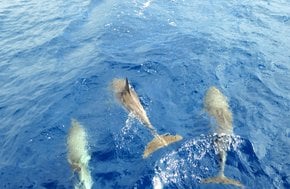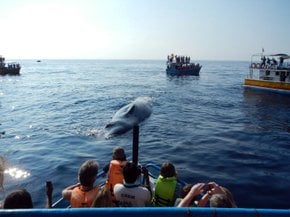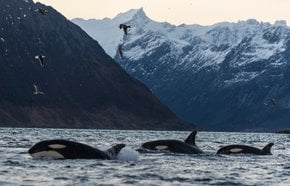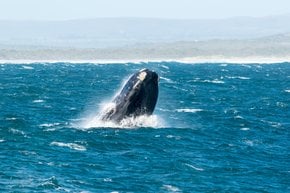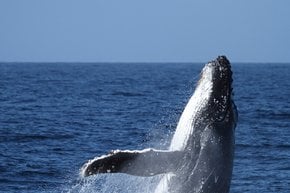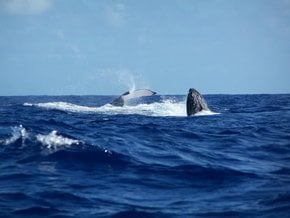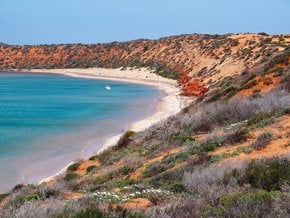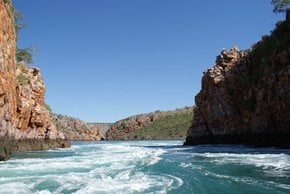Whale Watching in Western Australia 2026-2027
Enjoy the longest whale-watching season in the world
Best time: all year round
The coast of Western Australia lies on the annual migration routes of humpback whales, blue whales, and southern right whales. They leave their feeding grounds in the Southern Ocean to breed in the warm waters of north-west Australia. The whales are frequently seen between May and December when they travel along the Kimberley Coast. Mother whales can be seen with their calves coming close to the shore. The peak time for whale-watching cruises is between January and March. Although whales, dolphins and sea lions can be seen off Australia's coast all year round.
Augusta whale watching tours depart at 10 a.m and 2 p.m. every day from mid-May through August. Boats are stationed in Augusta Boat Harbour. Naturalists and biologists on board will share their knowledge and passion for Western Australia’s marine wildlife. Many boats offer air-conditioned lounges and 360-degree panoramic views through seat-to-ceiling windows.
Bremmer Bay is famous for encounters with magnificent orca whales. The small scenic coastal town a five-hour drive from Perth (or two hours from Albany) boasts the largest population of orcas in the southern hemisphere. About 150 of them congregate on their feeding grounds in the Bremer Canyon from January to March. There are also some sperm and pilot whales, and sunfish. Whale watching can be combined with a beach vacation at that time. July brings southern right whales to Bremer Bay to give birth, so it's the best time to see mothers and calves in the sheltered bays around Bremer.
Fremantle boasts many humpback whale sightings from June to October when mothers and their calves are fulfilling their migration back towards the South Ocean. Many whale-watching excursions leave at that time out of Fremantle Fishing Boat Harbour. Some operators also go to the Perth Canyon, located 27 nautical miles (50 km) off the coast of Perth. Abundant krill population attracts endangered blue whales there every year.
The beautiful seaside town of Albany offers whale watching tours to view majestic humpback and southern right whales. They make a stop at the King George Sound during their 15,000-mile (24,140-km) migration. King George Sound is one of the few natural deep water channels in the world that serves as a safe shelter for whales, dolphins, and seals. Seals like to relax on the rocky banks of Seal Island. Two-hour tours depart at 10 a.m and 2 p.m daily from the Albany Water Front Marina in June–September.
Busselton is a charming seaside town located by the beautiful Geographe Bay. Due to the proximity of the Margaret River wine region and the iconic Busselton Jetty (the second-longest wooden pier in the world), it attracts a lot of visitors. Tourists can discover the rich marine world of Geographe Bay boarding a boat right on the famous Busselton Jetty. The bay shelters Humpback Whales every September—during their migration to the feeding grounds in South Ocean. In October, Busselton sees blue whales that head south. Many calves are making the journey for the first time. In addition to whales, there are many seals, common and bottlenose dolphins, and other animals.
Dunsborough Whale Watching Tours depart daily from early September through to early December at 10 a.m. and 2 p.m. Coffee, tea and biscuits are available on board. Most boats head to Geographe Bay, which whales use as their shelter to rest before the long journey.
Coral Bay witnesses humpback whale pods that migrate from June to October. Warm waters rich with krill and fish are a safe haven for mothers and calves. There are also minkes, orcas, southern right whales and other marine animals like turtles, dolphins, and dugongs. The Ningaloo Reef is especially vibrant with marine life. Many cruise operators offer a relaxing trip with food and drinks on board.
















